Digital Audio Players
published: Aug-14-2014, last update: Nov-17-2015

3 (to me available) portable DAP players were compared in a small test.
Sansa Clip Sport, Sansa Fuze v2 (technically similar to Sansa Clip) and FiiO X3.
The Sansa Fuze+ and Clip+ are technically similar and differ from Sansa Fuze (v2) and clip.
The Sansa Clip Sport differs from the Clip ZIP.
NOTE: these players were NOT loaded with low impedance headphones because I use these players with an external amplifier (Kameleon)
When loaded with low impedance headphones they measure ‘worse’ in the THD and IMD department.
First a comparison between Sansa clip sport and FiiO X3:
The GUI of the clip sport is not the simplest but with properly tagged files (mine are) it works O.K.
The same is true for the X3, poor GUI, strange button layout, bulky and simple display.
Sometimes the player ‘hung’ and became unresponsive, this IS solved by the 3.3 Firmware.
Currently I have the X3 running on 3.4 Firmware of which FiiO mentioned will be the last FW update for this model.
FiiO also added a 5 band equalizer (which I do not use) in the latest firmware.
The LATEST FIRMWARE for FiiO products can be found HERE.
For those who like other themes there are 3rd party ‘skins/themes’ that can be downloaded.
You need to ensure they are based on the 3.4 Firmware though.
The 3.4 FW runs fine, I use an alternative ‘theme’ based on 3.4 FW.
The Sansa firmware seems less buggy.
I have not experienced any issues with the X3 running on 3.4FW though.
The Sandisk has a 5 band digital EQ, the X3 has ‘old fashion’ truly analog tone control (bass & treble) + also a 5 band EQ but with a limited dB range (+/-6dB)
The X3 can play MUCH louder, it can reach 5x the output voltage of the Fuze/Clip in ‘High output’ setting.
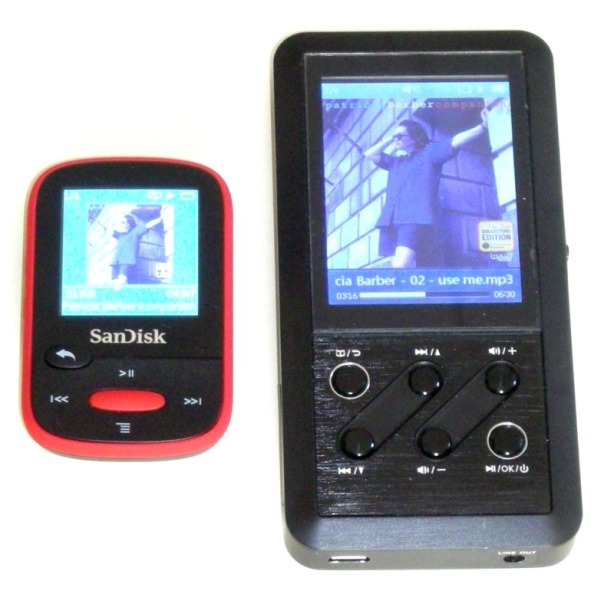 On direct comparison (same song, about the same volume) when plugging a headphone between them I noticed the clip sounded audibly different (less) compared to the X3.
On direct comparison (same song, about the same volume) when plugging a headphone between them I noticed the clip sounded audibly different (less) compared to the X3.
The cymbals etc. lacked definition / presence and the sound was less refined.
Having read some reviews stating the clip Sport (and clip Zip) have lesser sonic qualities than the older Fuze(+) and Clip(+) I was curious how it measured.
Some, but far from everything telling, RMAA results for clip sport versus X3
left plots/data = Sansa Clip Sport < ~~~~~~~~~~~~~~~~~~ > Right plots/data = FiiO X3

No mentionable roll-off in the frequency range… in fact the clip sport is even slightly more linear.
For those that noticed… all 3 players show the exact same amount of gentle roll-off in the lows…. this is caused by the soundcard used for these tests (SB1240).
Squarewave measurements have shown that the Sansa players run flat from DC (0 Hz) upwards where the X3 rolls off around 20Hz on the HP out but reaches MUCH lower (< 1Hz) on its line-out.
What do the RMAA generated specs have to say about these players (16 bit 48kHz to even the playing field as the X3 is capable of 24-192).
The FiiO X3 seems to be the better player based on specs but they aren’t very far apart.
THD plots look different.
What’s interesting in these plots is the base of thr 1kHz (and uneven harmonics) widens near the noise floor in the Clip Sport. This is an indication for low frequency jitter.
Also the Sansa seems to generate more harmonics and are slightly higher in amplitude.
SOME of the higher frequency spikes MAY not even be present but could also be caused by the used SB1240 soundcard.
Other interesting plots are made using an oscilloscope and revealed some technical issues with the ‘Sport’ and a bit in the X3.
A squarewave can show digital- and analog-filter characteristics. It should be noted that the test signals used here do NOT exist in nature and certainly not in music.
The pre- and post-ringing that is visible is only seen when steps near the Nyquist frequency (half the sample rate frequency) and, as said, this is NOT the case with real music signals.
On the left above a -3dB 220Hz squarewave of the Sansa Clip Sport. The plot of the Sansa Fuze is exactly the same so see no need to show that one as well.
On the right above the 220Hz squarewave of the FiiO X3. When examined closely one can see the horizontal lines are slightly sloping downwards in the X3 but NOT in both Sansa’s.
Both scope images are taken from the headphone outputs with a 30Ω resistive load.
Zooming in on the edges of the waveform revealed something interesting. It appears as though Sansa skimped on the analog post filtering. On the actual signal a high frequency sinewave is superimposed.
The plot on the right is zoomed in even more and shows the ‘jagged edge’ has a frequency of around 330kHz.
Unaudible high, yes…., the amplitude is about 35mV and if that signal is fed into a not too well designed external amplifier that ‘may’ present audible problems after all.
On the left above the same plot of the Fuze, which doesn’t have the ‘jagged’ edge. The noise on the waveform is lower but is near the resolution of the oscilloscope so the noise is most likely not there.
The plot on the right above shows the X3 and is also looking nicely. I would even say it appears to have less noise than the Fuze but as said the noise levels shown are an oscilloscope thing rather than actual noise being present.
Another interesting finding has to do with reproduction of the file itself. The 220Hz frequency isn’t chosen by chance but is based on 44.1kHz sample frequency. The file is a real squarewave of 220.5 Hz, the frequency is actually a 200x divided 44.4kHz signal.
The data going into the DAC chip should thus be a representation of a squarewave and should always look the same when the output signal is ‘written’ a lot of times in a ‘memory’.
There are two major sample frequencies around that differ about 10% in frequency.
A 44.1kHz (and its multiples 88.2/176.4) and 48kHz and its multiples (96/192) There are even higher multiples but these are not that common.
Depending on how the digital signal is processed, and whether or not this is done in an exact multiple of 44.1 or 48kHz, the signal should always reproduce the same. When the master clock-frequency isn’t an exact multiple of the samplerate the electronics have to ‘alter’ the waveform (in very small steps) in order to ‘come close’ to the pitch of the original signal. So when a player has 1 clockgenerator with a multiple of 44.1kHz it can’t replicate 48kHz signals perfectly and if it has 1 clock of 48kHz it can’t reproduce 44.1kHz exactly.
To keep manufacturing costs low sometimes a clock with an ‘inbetween’ multiple is used and the correct pitch is ‘calculated’. More expensive players (DACs) will have 2 clocks for signal processing which is selected by the incoming frequency of the file. These DAC’s reproduce these signals correctly.
On the left the 220.5Hz signal played on the Sansa Clip Sport. It shows the timing steps quite well.
The thick black line actually is made of 1000x the original signal written on top of each other. The picture shows that the actual waveform isn’t an exact 220.5Hz ‘synchronised’ signal. On a Normal moving scope picture you would thus see a 220Hz ‘edge’ that changes shape continuously.
The plot on the right is of the Fuze and shows the same effect but the ‘steps’ aren’t visible as the signal is highfiltered much better.
 On the left a plot of the FiiO X3. Perfect reproduction every time with the exact same waveform. The 1000 traces are simply on top of each other.
On the left a plot of the FiiO X3. Perfect reproduction every time with the exact same waveform. The 1000 traces are simply on top of each other.
This means that either the internal clock frequency is a multiple of 44.1kHz (most music files are CD rips and thus 44.1kHz) and reproduces 48kHz as shown above (and the Sansa’s may do 48kHz better) or the X3 can do both 44.1 and 48khz sample frequencies correctly.
As I didn’t check the reproduction of a 48kHz derived test signal I may never know.
As was visible in the first test the X3 showed it rolled off a bit in the lower extremes of the frequency range. The Sansa’s appear not to to this and in fact are well known for their low frequency behaviour. The output signal of the Sansa’s is actually DC coupled and thus can even reproduce a (for headphones dangerous) DC signal SHOULD the audio file contain that. Of course NO audio file ever contains such a signal unless it is purposely made as I have done here.
The waveform that was made is not a ‘real’ squarewave as the ones used above.
A squarewave ‘jumps’ instantaniously from a positive output voltage to an equal amplitude but negative output voltage. It thus jumps around the ‘0 Volt’ line.The testsignal use here jumps between 0 Volt and (-3dB) positive output.
 The left plot is of the Sansa Fuze and looks exactly the same as that of the Clip Sport. As can be seen the duty cycle is NOT an exact 50% either as is the case with the squarewave used above.
The left plot is of the Sansa Fuze and looks exactly the same as that of the Clip Sport. As can be seen the duty cycle is NOT an exact 50% either as is the case with the squarewave used above.
It is a 1.4 second wide DC pulse with a 1.7 second wide ‘0V’ line.
The plot on the left is exemplary and describes the exact waveform as provided.
One could say the ‘frequency’ of this signal is 0.34Hz
The frequency response of both Sansa’s is thus reaching down to 0 Hz (DC) and shows the output signal is NOT AC-coupled. The output signal was loaded with a 30Ω resistive load.
The headphone output of the X3 shows needle pulses instead of steps and thus the output signal is AC coupled somewhere in the chain.
As the output was loaded with 30Ω I suspected the output had a coupling capacitor somewhere. With no load the waveform would look more like the Sansa plot in that case.
Alas, the plot on the right clearly shows the load did not make a difference as the right plot is taken without any load (well… a 1M Ohm load).
This means somewhere between the DAC and the HP out there is a coupling cap present that prevents very low frequencies to appear at the output of the headphone amp. This could be anywhere between the analog volume/tone control and headphone amp input part of the circuit.
Is the ‘low frequency roll-off problematic on the HP out would be the logical question… I don’t think so as the RMAA plots above show both the Sansa’s and the X3 (both loaded with 30Ω) show a -0.25dB roll-off at 20Hz. Of course we KNOW the Sansa does DC and thus that -0.25dB is NOT caused by the players but by the used soundcard. The X3 thus reaches 20Hz without any attenuation at all. As 20Hz is already inaudible low (30Hz we can actually just about ‘hear’) I don’t think the HP out is that ‘rolled-off’ for audio at all.
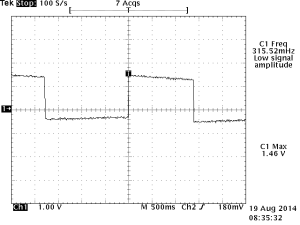 The X3, however, also has a line-out coming (almost) directly from the DAC output (there is an opamp circuit in between). This output obviously is still capacitor coupled given the fact that the ‘0V’ line is below 0V and the horizontal lines are sloping. This means that the line-out reaches down MUCH further in frequency and the cut-off point (-3dB) is well below 0.2Hz. When using an external amplifier the line-out is the obvious choice for the OCD listener.
The X3, however, also has a line-out coming (almost) directly from the DAC output (there is an opamp circuit in between). This output obviously is still capacitor coupled given the fact that the ‘0V’ line is below 0V and the horizontal lines are sloping. This means that the line-out reaches down MUCH further in frequency and the cut-off point (-3dB) is well below 0.2Hz. When using an external amplifier the line-out is the obvious choice for the OCD listener.
Sound evaluation:
Could the audible differences have been placebo or are there other things that didn’t show up in these (basic) measurements ?
I tried some other, well made, recordings on both players and on direct comparison the differences were noticeable (wasn’t able to get the levels the same though).
To ‘even’ the playing field I ‘recorded’ the headphone-out signal from both players on 24/96kHz and normalized both files so they play exactly as loud. Now they and can play though 1 DAC/amp without having to switch the actual headphone.
Differences became (almost) non-existent but still thought the X3 sounded slightly better, even though the tonal balance was now the same.
That issue thus seemed to be caused by a level difference yet still could tell the players apart (this was a sighted listening test where I knew what recordings were played).
To create a blind test I made 2 excerpts (small clips of the recording where I thought I heard the differences the most) from both files (thus Clip sport recordings and X3 recording) and copied those files each 10 x and put these in a playlist so I got 20 songs (10 of each excerpt).
I put the player on random and thus it picked random a file ‘clip sport’ or ‘X3’.
Closed my eyes and pressed skip … listened and then looked to see if I correctly identified the player.
Out of the 10 attempts all of them were correct so yes… the differences are even audible with a simple blind test.
After I changed the firmware version from the Clip Sport from 1.09 to 1.17 the measurements are slightly better in the IMD products and 2 spikes just around the 1khz tone in the synamic range test (see RMAA reports) that disappered and, though hard to hear, noticed the sound quality improved and could hear less differences now compared to the Fuze/X3. Upgrading the firmware also adds a software ‘button lock’ function and improved the random generator (always started with the same song on original firmware) but you loose ‘genre’ selection and the max amount of songs it can handle went from 4000 songs (+4000 on the uSD card) to 2000 + 2000
You thus cannot ‘see/listen to’ more than 2000 songs on the uSD card unless you use a program and a tutorial on the Sandisk website.
As said there seems to be a workaround.
It does play WAV and FLAC as well so a larger capacity card could be filled with higher SQ songs ?
The uSD card contents will have to be browsed through the internal browser and are NOT integrated in the ‘music library’ it creates on its internal memory.
I figure they opted for this as they got a lot of ‘heat’ from people inserting large cards with non-tagged files and it took ages for those older players to update the memory.
48kHz is the max sample frequency so no 96 and 192kHz files (need the X3 for those).
Even though the X3 can play 192/24 it does downsample to 96/24 and does the same on its SPDIF out.
Needless top say the clip sport sounds quite good, certainly suited for usage while exercising or non critical listening.
With 1.17 FirmWare it sounded better but it still shows a higher amount of jitter than the Fuze and X3.
I have doubts whether that jitter level is actually audible but if you feel you can detect minute amounts of jitter than this may not be the best choice.
Wouldn’t recommend it for hifi enjoyment as it can not play files above 48kHz although it does sound quite good for the price (around € 50.-)
The FiiO X3 is much less portable but audibly the better player. Both have awkward GUI’s
Sansa Clip Sport versus Sansa Fuze.
First lets compare the generated RMAA data, Left = Clip Sport Right = Fuze
Tthe clip sport measures better than the Fuze …. in RMAAgenerated numbers that is.
What does the FR look like ?
The Sport is slightly ‘flatter’ and is filtered steeper after 20kHz.
The Fuze shows a slight ‘lift’ in FR between 10kHz and 20kHz… < +0.1dB where the Sport is very flat and the X3 shows a slight decrease there.
Again…. +0.1dB is inaudible, certainly in that part of the frequency range.
The roll-off in the lower part of the frequency plots is caused by the used soundcard (SB1240)
Next the Harmonic distortion plots…
Something interesting to see here as well.
The Clip Sport (left plot) has higher 3rd harmonics, the Fuze (right plot) has higher 2nd harmonics.
The harmonics spectrum and level of the highest harmonics is better in the Fuze (not loaded just HP out into the soundcard).
The Fuze’s ‘spectrum’ is ‘nicer’ to the ears but also very low in level (below what some consider to be inaudible)
Jitter levels of the Fuze are better than the Clip Sport.
SOME of the higher frequency spikes MAY not even be present but could also be caused by the used SB1240 soundcard
Sound comparison Sansa Fuze versus FiiO X3
As noticed earlier the Sport (FW 1.09) doesn’t sound as ‘real’ in the treble as the X3 does.
I own the Fuze for quite a few years now and was always impressed by its sound quality.
I had compared the Fuze before to the X3 before and thought they sounded very similar.
Having performed the blind listening test with the Sport vs the X3 I made a ‘recording’ from the Fuze’s headphone out and compared these three files.
The Sport (with original firmware) was easy to pick as the ‘tambourine bells’ in the test file gave the Sport away each and every time reliably in a blind AB test.
Going from the specs one would think that SQ of the Sport would be better than the Fuze.
Well… it isn’t.
Perhaps the most important give away is the broad base in the THD plot of the Sport which isn’t seen in both other players indicating higherv levels of low frequency jitter.
In fact I wasn’t able to tell the Fuze apart from the X3.
The X3, however, has a bigger display, is capable of more formats/sampling rates, has SPDIF out, can be used as a DAC and can play a LOT louder and effortlessly drive 600 Ohm headphones.
Sonically (at the same undistorted SPL) I find it impossible to tell them apart.
Does this mean the SQ from the X3 is mediocre or is the Fuze simply that good ?
Well.. differences between the X3 and Fuze start to show with higher impedance headphones and on higher listening levels where the Fuze simply runs out of voltage swing while the X3 goes on and on, and keeps sounding great.
At lower levels both players simply remain under the ‘border’ of my hearing capabilities and to me are equally ‘transparent’.
When used with a portable amp even the max SPL problem is solved.
verdicts
verdict Sansa Clip Sport:
Nice player but the SQ is slightly less than its worse measuring but better sounding predecessors (Fuze and Clip) this improved when FW version 1.17 was installed. Very small and highly portable. Very small but decent display. Sound quality is decent but not audiophile.
RMAA report of the Sansa Clip Sport with original v1.09 firmware can be viewed/downloaded here
RMAA report of the Sansa Clip Sport with v1.17 firmware can be viewed/downloaded here
verdict Sansa Fuze:
Great sonics, easy to operate. Can be Rockboxed. Only available second hand.
It shows a gentle roll-off when few with 44.1kHz files and runs flat when 48kHz files are used.
RMAA report of the Sansa Fuze playing 44.1kHz files can be viewed/downloaded here
RMAA report of the Sansa Fuze playing 48kHz files can be viewed/downloaded here
Verdict FiiO X3:
Poor button layout, awkward GUI, but excellent sound quality, can be used as transport AND as a 24/192kHz capable USB DAC (needs drivers). The 3.3 Firmware is a MUST if you want trouble free operation.
The X3 does down-sample 192khz files to 96kHz though so not a real 192kHz capable player in that sense.
RMAA report of the FiiO X3 playing 16/48kHz files can be viewed/downloaded here

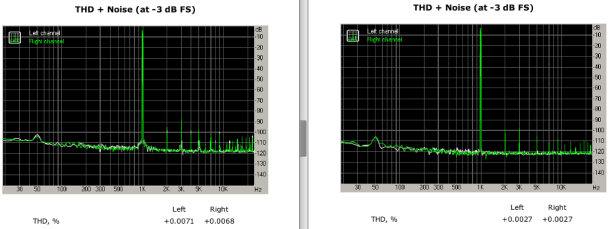
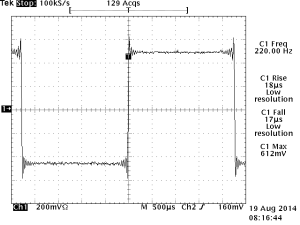
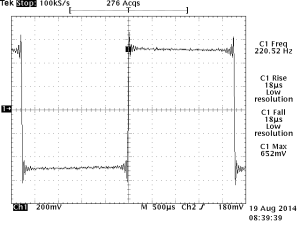


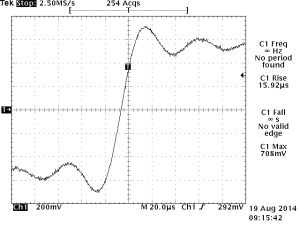




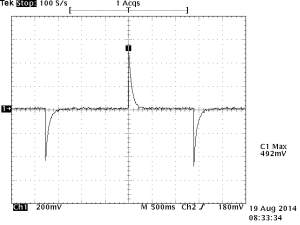




Unbelievable. A review with measurements AND blind tests! You deserve a Nobel prize. Thank you!
great line up comparison
What a brilliant review Frans! How have I not seen this before? Great choice in test music too.
Really great review, thank you. Even though I have been picking up every (non+) Fuze I can find because I think they are such a great (and rather unrecognised) player I have still been tempted by the supposedly better audio quality of the Fiio devices. This has been very helpful then in putting some perspective into comparisons between the two brands. So for the time being I’m going to stick with my faithful old Fuzes.
A new (cheaper) FiiO is launched which may be interesting for Sansa owners as the price is closer to the Sansa’s
It’s called the Fiio M3 and seems like an interesting player.
http://www.fiio.net/en/products/47